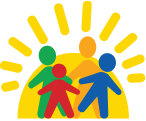Bright Futures
7 and 8 Year Visits
Here are some suggestions from Bright Futures experts that may be of value to your family.

How Your Family is Doing
- Encourage your child to be independent and responsible. Hug and praise her.
- Spend time with your child. Get to know her friends and their families.
- Take pride in your child for good behavior and doing well in school.
- Help your child deal with conflict.
- If you are worried about your living or food situation, talk with us. Community agencies and programs such as SNAP can also provide information and assistance.
- Don’t smoke or use e-cigarettes. Keep your home and car smoke-free. Tobacco-free spaces keep children healthy.
- Don’t use alcohol or drugs. If you’re worried about a family member’s use, let us know, or reach out to local or online resources that can help.
- Put the family computer in a central place.
- Know who your child talks with online.
- Install a safety filter.
Staying Healthy
- Take your child to the dentist twice a year.
- Give a fluoride supplement if the dentist recommends it.
- Help your child brush her teeth twice a day
- After breakfast.
- Before bed.
- Use a pea-sized amount of toothpaste with fluoride.
- Help your child floss her teeth once a day.
- Encourage your child to always wear a mouth guard to protect her teeth while playing sports.
- Encourage healthy eating by
- Eating together often as a family.
- Serving vegetables, fruits, whole grains, lean protein, and low-fat or fat-free dairy.
- Limiting sugars, salt, and low-nutrient foods.
- Limit screen time to 2 hours (not counting schoolwork).
- Don’t put a TV or computer in your child’s bedroom.
- Consider making a family media use plan. It helps you make rules for media use and balance screen time with other activities, including exercise.
- Encourage your child to play actively for at least 1 hour daily.
Your Growing Child
- Give your child chores to do and expect them to be done.
- Be a good role model.
- Don’t hit or allow others to hit.
- Help your child do things for himself.
- Teach your child to help others.
- Discuss rules and consequences with your child.
- Be aware of puberty and changes in your child’s body.
- Use simple responses to answer your child’s questions.
- Talk with your child about what worries him.
School
- Help your child get ready for school. Use the following strategies:
- Create bedtime routines so he gets 10 to 11 hours of sleep.
- Offer him a healthy breakfast every morning.
- Attend back-to-school night, parent-teacher events, and as many other school events as possible.
- Talk with your child and child’s teacher about bullies.
- Talk with your child’s teacher if you think your child might need extra help or tutoring.
- Know that your child’s teacher can help with evaluations for special help, if your child is not doing well in school.
Helpful Resources
Smoking Quit Line: 800-784-8669 | Family Media Use Plan: www.healthychildren.org/MediaUsePlan | Information About Car Safety Seats: www.nhtsa.gov/campaign/right-seat | Toll-free Auto Safety Hotline: 888-327-4236
Safety
- The back seat is the safest place to ride in a car until your child is 13 years old.
- Your child should use a belt-positioning booster seat until the vehicle’s lap and shoulder belts fit.
- Teach your child to swim and watch her in the water.
- Use a hat, sun protection clothing, and sunscreen with SPF of 15 or higher on her exposed skin. Limit time outside when the sun is strongest (11:00 am–3:00 pm).
- Provide a properly fitting helmet and safety gear for riding scooters, biking, skating, in-line skating, skiing, snowboarding, and horseback riding.
- If it is necessary to keep a gun in your home, store it unloaded and locked with the ammunition locked separately from the gun.
- Teach your child plans for emergencies such as a fire. Teach your child how and when to dial 911.
- Teach your child how to be safe with other adults.
- No adult should ask a child to keep secrets from parents.
- No adult should ask to see a child’s private parts.
- No adult should ask a child for help with the adult’s own private parts.
Consistent with Bright Futures: Guidelines for Health Supervision of Infants, Children, and Adolescents, 4th Edition
For more information, go to https://brightfutures.aap.org.